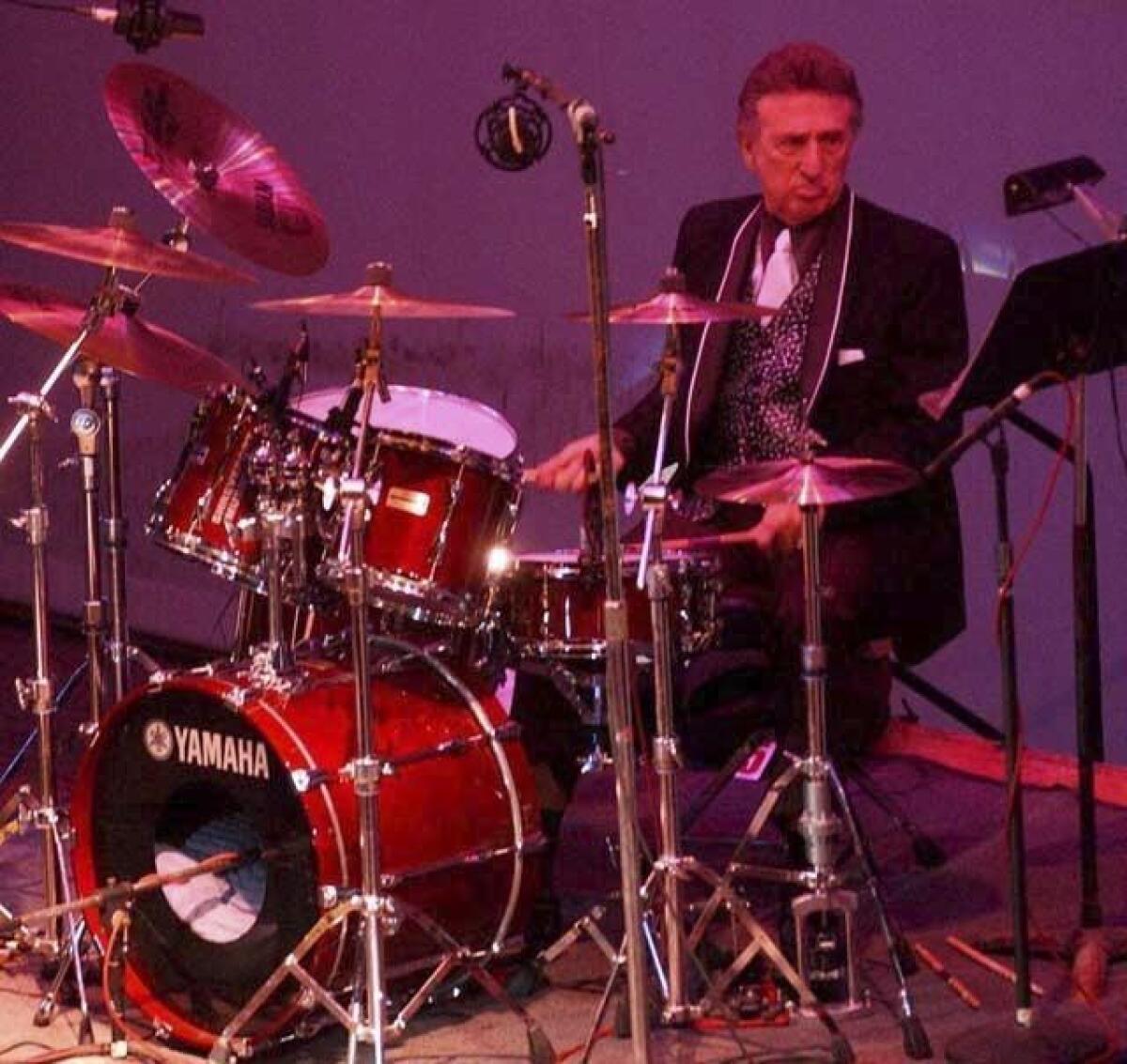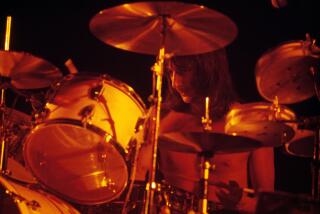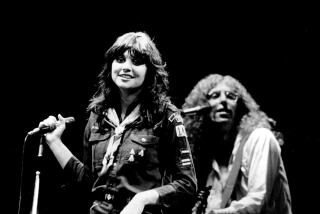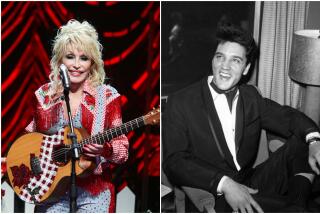Appreciation: Elvis Presley’s drummer D.J. Fontana set the beat for rock ‘n’ roll’s future
D.J. Fontana accomplished more with a snare drum, cymbal and sticks than the Who’s Keith Moon did with a 20-piece kit.
With snaps, thumps and pows that six decades later are a standard foundation of pop music, he help define rock ’n’ rolls’ rhythmic patterns. Starting in the mid-1950s, the influential drummer for Elvis Presley played on hits including “Jailhouse Rock,” “All Shook Up” and “Viva Las Vegas.”
Fontana, who died in his sleep on Wednesday night at age 87, had a style that blended measures of restraint with explosive moments of energy. The snare rolls that divide each verse of “Hound Dog,” for example, hit like bullets into a slingshot, pushing momentum and then snapping back. Conversely, on “Can’t Help Falling in Love,” Fontana delicately taps a cymbal with a brush, keeping perfect time across three minutes like the second hand on a vintage Timex.
Through his decade with Presley, Fontana set to tape rhythms that echo in the work of some of music’s most familiar drummers, including the Rolling Stones’ Charlie Watts, the Beatles’ Ringo Starr, White Stripes’ Meg White, the E St. Band’s Max Weinberg and Stan Lynch, formerly of Tom Petty’s Heartbreakers.
Wrote Lynch in an online essay: “When you hear D.J. Fontana playing his drums you are hearing a kid from Shreveport, LA tell you what he thinks music should sound like. Rock ’n’ Roll had a clean slate. There were no drum parts written for him on those Elvis records. He dictated the groove and made you feel it. There is no one on this earth that can make music move the way he did. He set the standard.”
That Fontana landed on stage as part of Presley’s backing band was circumstantial. His main gig when he met Presley and bandmates Scotty Moore and Bill Black in 1954 was drumming for the radio show the Louisiana Hayride. At the time, drummers were a luxury that only successful western swing bands could afford.
Fontana recalled in a 2001 interview that while at the Hayride, Presley asked him to “help us out a little bit.” They went back to the dressing room to rehearse.
Once Fontana listened to what they were doing, his reflex was to reduce his role. “The sound they were getting was so good that I said, ‘Why should I assemble it up and bang it up?’ ” Instead, he decided to stay out of their way. “They were the stars. Let them do what they’re going to do and not clutter up the rhythm. Play it straight ahead and no tricks. No tom-toms. No cymbals. And I guess they liked it.”
Fontana’s style was the opposite of the competitive, innovative ball-hogs of future decades such as the Who’s Moon, Rush’s Neil Peart and the Police’s Stewart Copeland. He understood his role to be that of a propellant gear in a musical engine.

Which isn’t to say he wasn’t inventive. During the session for “Don’t Be Cruel,” Fontana was trying to find something to add a jolt to the song. As told in writer Peter Guralnick’s Presley biography “Last Train to Memphis,” it took 28 takes to get the song right, and somewhere along the way Fontana tapped a new percussion instrument: “[He] laid Elvis’ leather-covered guitar across his lap and played the back of it with a mallet, to get an additional snare effect.”
That mallet thump is pumping out of speakers somewhere in the world as you read this, ensuring that Fontana’s beat will go on for years to come.
ALSO
Longtime Elvis Presley drummer D.J. Fontana dies at 87
‘Elvis Presley: The Searcher’ HBO doc seeks the artist behind the legend
40 years after his death, Elvis Presley is still the King in the YouTube age
Listen to Tom Petty talk about Elvis Presley for a new HBO documentary
Anthony Bourdain wasn’t just a food lover — he was a music freak, too
For tips, records, snapshots and stories on Los Angeles music culture, follow Randall Roberts on Twitter and Instagram: @liledit. Email: randall.roberts@latimes.com.
More to Read
The biggest entertainment stories
Get our big stories about Hollywood, film, television, music, arts, culture and more right in your inbox as soon as they publish.
You may occasionally receive promotional content from the Los Angeles Times.











